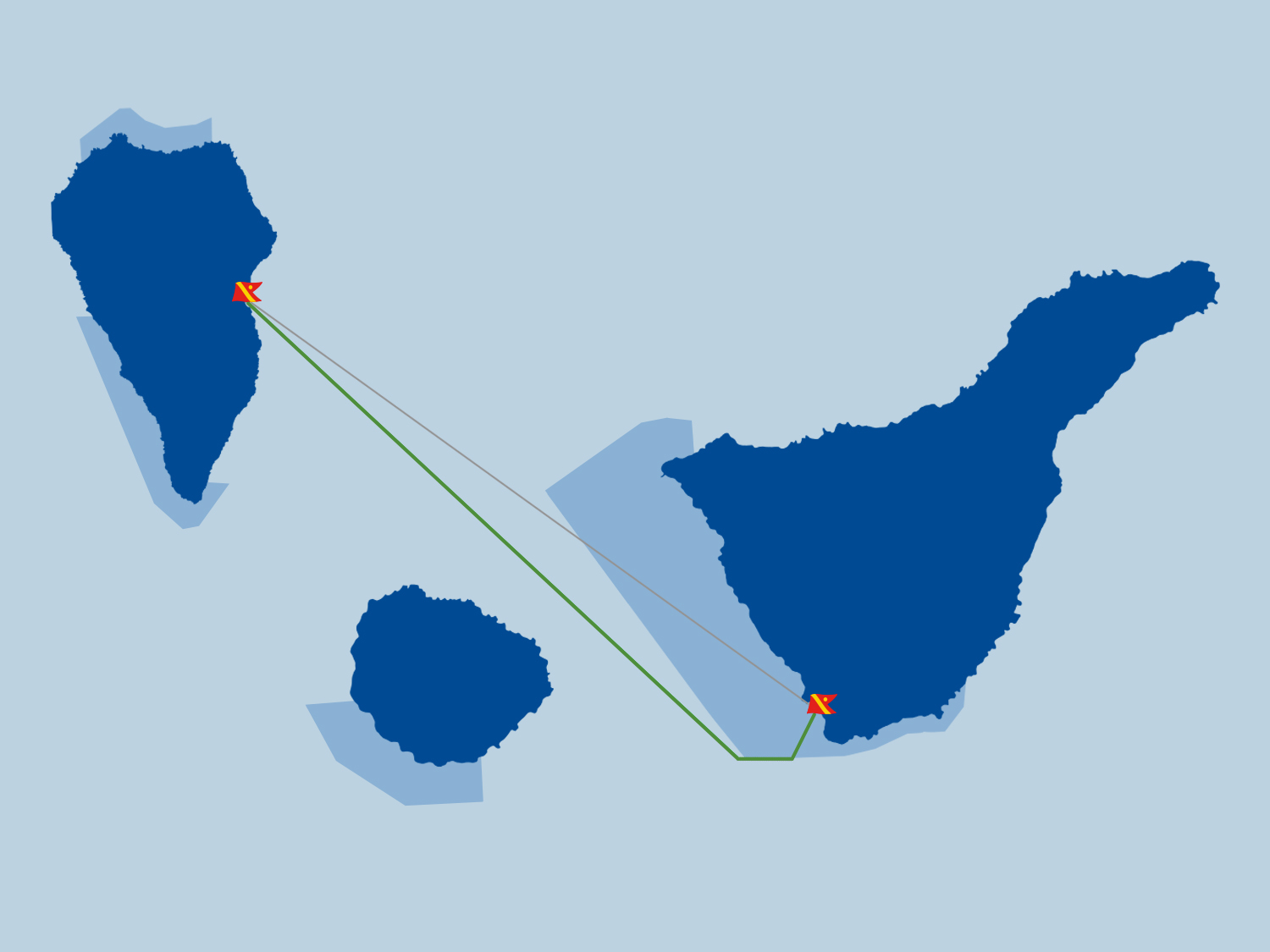The company, which has been operating its so-called ‘ecological routes’ for two decades, is further reducing the number of miles sailed through Special Conservation Areas (ZEC) on its routes between Tenerife, La Gomera and La Palma, among other measures, with the aim of preserving the welfare of cetaceans and other marine fauna.
Fred. Olsen Express has been operating its so-called ‘ecological routes’ for two decades, avoiding the Special Area of Conservation (ZEC) in the Canary Islands Marine Demarcation, thus bypassing areas of heavy traffic or where there is a greater probability of encountering cetaceans, despite this increasing crossing times. Specifically, it was with the arrival of fast ferries in the late 1990s that changes to itineraries were introduced, with a view to protecting marine wildlife, mainly on routes in the south of Tenerife.
Additionally, significant improvements have been introduced over the last month, including:
-
Adjustments to itineraries to navigate as few miles as possible through ZEC areas.
-
Course changes will be made outside the ZEC zone, thus avoiding manoeuvres within the special conservation areas.
-
The ZEC zones have been included in detail on the navigation charts on the bridge.
-
Furthermore, navigation routes through ZEC areas have been reflected in ship procedures and travel plans to ensure strict compliance.
These new measures represent the following changes to two of its shipping routes:
-
On the route between La Gomera and Tenerife, the journey through the ZEC zone is reduced by more than 3 nautical miles (5.5 km) compared to the original ‘eco’ route and by 4 miles (7.5 km) compared to the direct sailing route. This means that the journey between the two islands is increased by 2.15 miles (4 km), representing an average of 8 additional minutes of travel time compared to the company's usual crossing time.
.JPG)
-
On the route between La Palma and Tenerife, the ZEC zone reduces the distance by 6 miles (10.4 km) compared to the original ‘eco’ route and by 13.5 miles (25 km) compared to the direct route. This represents an increase of 3 miles (5.5 km) in the journey, which translates into an additional 10 minutes of travel time.

These adjustments to the routes represent an increase of 4,815 nautical miles per year, or 8,919 kilometres, which is equivalent to 229 trips between Tenerife and La Gomera, or the distance between the Canary Islands and Alaska in the United States.
With these measures, Fred. Olsen Express continues to work towards its contribution to the Sustainable Development Goals (SDGs) 14 - Life below water and 9 - Industry, innovation and infrastructure.

Further information at https://www.fredolsen.es/en/environment-and-oceans